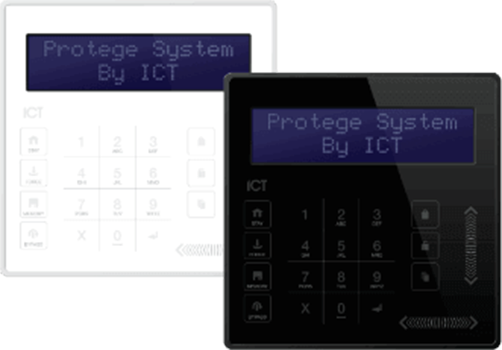Video MGMT System
 Access Control
Access Control
Voice & Data Wiring
 Burglar Alarm
Burglar Alarm
 Fire Alarm
Fire Alarm
Video MGMT System
Voice & Data Wiring
THOUGHT CENTER > Blog > Access Controls
November 10, 2023
Too busy to read? Here’s a summary:
In policy-based access control (PBAC), the system does more than attempt to match IDs to authorization lists. PBAC systems evaluate specific policies or conditions to produce more dynamic and context-aware access decisions.
Abdalslam notes that 75% of businesses rank physical security among their primary concerns. This statistic emphasizes the significance of protecting tangible assets and areas, further accentuating the importance of PBAC.
Let's dive deep into understanding PBAC and why it's becoming a game-changer for organizations.
PBAC stands for Policy-Based Access Control. It’s the most efficient and effective method for managing site authorizations.
Unlike other access control decision-making protocols, which often focus on a credential holder’s ID as a basis for access decisions, PBAC makes access decisions based on policies or conditions that must be met.
It's like setting up a rulebook for your security system.
Access is granted if the conditions (including ID) are right; if not, it's denied.
The primary factors considered by PBAC systems are access authorization policies, attributes related to users, attributes related to resources, and preprogrammed rules applied when making access decisions.
Authorization policies form the core of any PBAC system. These policies define specific conditions or rules that must be satisfied for access to be granted.
For example, an access rule might state that only employees of a particular department can access certain files or that access to a specific server is restricted after business hours.
By clearly specifying these rules, organizations can ensure a high level of security, making sure resources are accessed only under predefined conditions.
User attributes refer to specific characteristics or properties associated with individual users. User attributes may include the role in the organization (e.g., manager, technician, intern), their location, and the credential types they use.
PBAC systems assess these attributes to evaluate whether a user meets the criteria set out in the access authorization rules.
For example, if a rule allows only managers to access financial data, the system will check the user's role before granting access.
Resource attributes pertain to the properties of the resources being accessed. Resource attributes can range from specific doors in a building to databases, files, or even network segments.
Attributes may include the sensitivity level of a file, the location of a physical resource, or the type and value of assets in a storage area.
By evaluating attributes, the PBAC system can determine if the user's request to access a particular resource aligns with established access authorization rules.
Preprogrammed rules are built into the PBAC system to handle particular scenarios and to make access decisions based on real-time data.
For example, a preprogrammed rule might automatically deny all external access attempts during non-business hours or immediately lock down certain areas if a security breach is detected.
These rules allow the system to act swiftly and autonomously, ensuring security even in dynamic and potentially volatile situations.
Role-Based Access Control (RBAC) has long been a staple in the domain of advanced entry management. In RBAC systems, access permissions are based on the roles of individual users within an organization.
These roles determine what data or system areas a user can access and what operations they can perform. For example, an HR manager might have different access permissions than a sales executive.
While RBAC provides a straightforward and organized way to manage access, it lacks the flexibility required in many of today's most dynamic and complex environments.
Enter Policy-Based Access Control (PBAC). Unlike RBAC, PBAC empowers organizations with granular and context-aware access control that seamlessly adapts to evolving needs and dynamic security protocols.
Implementing PBAC With Top Brands
Several leading brands offer advanced PBAC solutions:
If you're looking to implement a PBAC system or want to know more about modern security solutions that can benefit your business or organization, you’re at the right place.
Mammoth Security is Connecticut’s go-to source for advanced commercial-grade security systems. Whether it's video surveillance, fire alarms, burglar alarms, access control, or structured cabling, our team has the expertise to meet your security needs.
Click to contact us and fill out the short form for a free site survey and security assessment.
NOT COMPLETELY SURE?
860-748-4292Policy-Based Access Control (PBAC) is a dynamic and flexible approach to access control where decisions are made based on conditions that must be met rather than just user identification.
Unlike traditional access control methods like Role-Based Access Control (RBAC), which grants access solely based on a user's organizational role, PBAC supports granular and context-aware access decision-making.
Organizations should opt for PBAC for access control because it offers real-time authorization decisions based on contextual information, explains the reasoning behind access decisions, and enhances security by only granting access under specific conditions.
Leading brands like Avigilon, ICT, and Honeywell offer advanced PBAC solutions that integrate seamlessly with existing security systems.